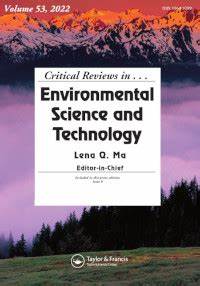生物修复和植物修复在污染土壤和水体中的应用:2018-2022年CREST出版物
IF 13.2
1区 环境科学与生态学
Q1 ENVIRONMENTAL SCIENCES
Critical Reviews in Environmental Science and Technology
Pub Date : 2023-01-19
DOI:10.1080/10643389.2023.2168365
引用次数: 5
摘要
摘要生物修复,包括生物修复和植物修复,由于其成本效益、节能和环境友好性,已被用于修复污染场地。2018年至2022年,《环境科学与技术评论》(CREST)共有24篇文章聚焦于这一主题。生物修复利用微生物来修饰和/或降解污染物,而植物修复利用植物来去除、遏制和/或改变污染物。它们涵盖了不同的污染物,包括传统污染物(营养物质、石油碳氢化合物、有机农药、塑料和重金属,如Cd、Cr、Pb和U)和新出现的污染物(药品和个人护理产品,以及全氟烷基和多氟烷基物质)。然而,这些修复技术在应用方面存在局限性,包括周期长、环境敏感性、营养缺乏和污染物毒性。因此,为了克服其缺点,已经采用了包括固定微生物/微藻细胞、构建微生物/微菌群落和使用改良剂在内的改进策略。进一步的研究应侧重于成本效益高的战略,以提高生物修复的效率及其环境适应性,特别是在极端环境和新出现污染物的情况下。具有良好污染物去除能力的微生物、微藻和植物应与工程实践相结合,基于它们在分子水平上的生物缔合和污染物之间的相互作用机制。图形摘要本文章由计算机程序翻译,如有差异,请以英文原文为准。
Applications of bioremediation and phytoremediation in contaminated soils and waters: CREST publications during 2018–2022
Abstract Biological remediation including bioremediation and phytoremediation has been used to remediate contaminated sites due to their cost-effectiveness, energy conservation, and environmental friendliness. There are 24 articles in Critical Reviews in Environmental Science and Technology (CREST) from 2018 to 2022 focusing on this topic. Bioremediation employs microorganisms to modify and/or degrade contaminants, while phytoremediation uses plants to remove, contain, and/or change contaminants. They cover different contaminants including traditional (nutrients, petroleum hydrocarbons, organo-pesticides, plastics, and heavy metals such as Cd, Cr, Pb and U) and emerging contaminants (pharmaceutical and personal care products, and perfluoroalkyl and polyfluoroalkyl substances). However, these remediation technologies have limitations in applications including lengthy periods, environmental sensitivity, nutrient deficiency and contaminant toxicity. Therefore, improvement strategies including immobilization of microbial/microalgal cells, construction of microbial/microalgal consortia, and use of amendments have been employed to overcome its drawbacks. Further studies should focus on cost-effective strategies to enhance the efficiency of biological remediation and their environmental adaptability, especially under extreme environments and with emerging contaminants. Microbes, microalgae and plants with good contaminant removal capability should be coupled with engineering practices based on their interactive mechanisms among bio-association and contaminants at molecular levels. Graphical abstract
求助全文
通过发布文献求助,成功后即可免费获取论文全文。
去求助
来源期刊
CiteScore
27.30
自引率
1.60%
发文量
64
审稿时长
2 months
期刊介绍:
Two of the most pressing global challenges of our era involve understanding and addressing the multitude of environmental problems we face. In order to tackle them effectively, it is essential to devise logical strategies and methods for their control. Critical Reviews in Environmental Science and Technology serves as a valuable international platform for the comprehensive assessment of current knowledge across a wide range of environmental science topics.
Environmental science is a field that encompasses the intricate and fluid interactions between various scientific disciplines. These include earth and agricultural sciences, chemistry, biology, medicine, and engineering. Furthermore, new disciplines such as environmental toxicology and risk assessment have emerged in response to the increasing complexity of environmental challenges.
The purpose of Critical Reviews in Environmental Science and Technology is to provide a space for critical analysis and evaluation of existing knowledge in environmental science. By doing so, it encourages the advancement of our understanding and the development of effective solutions. This journal plays a crucial role in fostering international cooperation and collaboration in addressing the pressing environmental issues of our time.

 求助内容:
求助内容: 应助结果提醒方式:
应助结果提醒方式:


